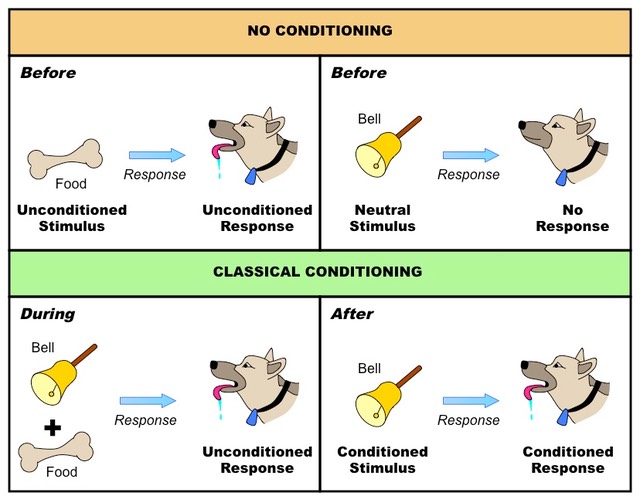E.3.1 Distinguish between innate and learned behaviour
Innate behaviour is an instinctive response that is developmentally fixed (i.e. independent of environmental context)
Learned behaviour is modified by experience
E.3.2 Design experiments to investigate innate behaviour in invertebrates, including either a taxis or a kinesis
Taxis is a change in movement in response to a stimulus
Euglena is a photosynthetic unicellular organism that requires light as a source of energy
- Step 1: Place Euglena in a petri dish with appropriate environmental conditions
- Step 2: Cover dish with aluminium foil, excluding a few small exposed sections
- Step 3: With a light source placed above, Euglena should aggregate towards holes

Kinesis is a change in activity rate in response to a stimulus
Woodlice have gills for respiration that will tend to dry out in dry conditions
- Step 1: Place a woodlouse in a dry petri dish and mark its movements every 30 seconds
- Step 2: Repeat for a second woodlouse placed in moist conditions
- Step 3: Compare the rate of movement for the two woodlice (should be more in dry dish)

E.3.3 Analyse data from invertebrate behaviour experiments in terms of the effect on chances of survival and reproduction
According to the experiments listed in E.3.2:
- The Euglena should display positive phototaxis (movement towards light)
- Moving towards light will increase the rate of photosynthesis needed for energy production
- The woodlice should display more random movement in a dry environment
- Woodlice are prone to dehydration (of gills) and will move faster and turn more to improve chances of leaving dry areas
In both cases, the invertebrate behaviour should improve its conditions, resulting in a better chance of survival and reproduction
E.3.4 Discuss how the process of learning can improve the chances of survival
Learning involves acquiring information from past experiences to adapt to new situations
Organisms capable of learning can modify their behaviours in response to environmental change in order to survive
- Animals learn how to avoid dangerous situations and predators
- Goslings learn who their mother is (imprinting) and stay close to avoid predators
- Animals learn how to hunt and obtain food
- Grizzly bears learn how to catch salmon via practise (operant conditioning)
E.3.5 Outline Pavlov's experiments into conditioning of dogs
- Pavlov was a Russian scientist who conducted experiments into classical conditioning
- Dogs normally salivate (unconditioned response) in anticipation of being fed (unconditioned stimulus)
- Pavlov sounded a bell (neutral stimulus) prior to feeding a dog
- After many repetitions, the dog came to associate the bell with food and began to salivate when the bell was rung (conditioned response)
- Pavlov described this as a conditioned reflex - the stimulus that prompted the response had been changed

E.3.6 Outline the role of inheritance and learning in the development of birdsong in young birds
- Male birds use birdsong as a means of communication - either signalling attraction or establishing territorial boundaries
- Most birds are born with a crude template song that is genetically inherited
- Whilst young, fledglings learn to expand the song by listening to, and mimicking, the adult version (motor learning)
- The possession of an innate template prevents the bird from learning the wrong species song, however birds raised in isolation will lack the complexity that develops from social interaction
- Birds are generally selective in what song they learn (not any song can be learnt) and once learnt the song is rarely modified